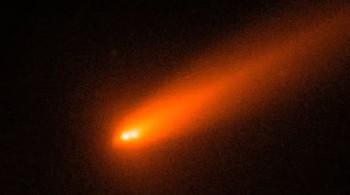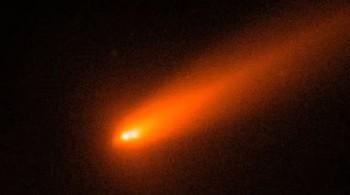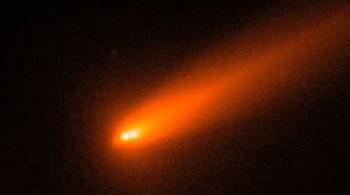
Comet C/2025 K1 (ATLAS) breaks into 3 after coming close to Sun
In a remarkable and rare celestial event, Comet C/2025 K1 (ATLAS) has broken into three pieces after swinging too close to the Sun. This extraordinary occurrence was captured by astronomers using Italy’s Copernicus telescope, providing a unique glimpse into the fragile nature of comets. The comet’s nucleus became unstable after it passed close to the Sun on October 8, resulting in the breakage into three distinct pieces.
Comet C/2025 K1 (ATLAS) was first discovered in May 2025 by the Asteroid Terrestrial-impact Last Alert System (ATLAS) survey. Initially, it was thought to be a single, intact comet, but as it approached the Sun, astronomers began to notice changes in its behavior. The comet’s close encounter with the Sun, also known as perihelion, occurred on October 8, when it came within 1.3 astronomical units (AU) of the Sun. One astronomical unit is the average distance between the Earth and the Sun, which is approximately 93 million miles or 149.6 million kilometers.
The intense heat and gravitational forces exerted by the Sun during this close encounter caused the comet’s nucleus to become unstable. As a result, the comet broke into three pieces, with two large chunks drifting about 2,000 kilometers from each other. A smaller third piece can be seen to the left of the pair. This breakage is a rare occurrence, and astronomers are eager to study the comet’s behavior and learn more about the composition and structure of comets.
The images captured by the Copernicus telescope provide a stunning visual representation of the comet’s breakage. The two large chunks of the comet’s nucleus can be seen clearly, with the smaller third piece visible to the left. The images also show the comet’s tail, which is composed of gas and dust that has been ejected from the comet’s nucleus as it approaches the Sun.
The breakage of Comet C/2025 K1 (ATLAS) into three pieces is a significant event, as it provides astronomers with a unique opportunity to study the internal structure and composition of comets. Comets are thought to be remnants from the early days of the solar system, and their composition can provide valuable insights into the formation and evolution of the solar system.
Astronomers will continue to monitor the comet’s behavior, studying the trajectory of the three pieces and the gas and dust that is being ejected from the comet’s nucleus. This will provide valuable information about the comet’s composition and the effects of the Sun’s gravitational forces on its structure.
The study of comets like C/2025 K1 (ATLAS) is essential for understanding the solar system and its many mysteries. Comets are thought to have played a significant role in the delivery of water and organic molecules to Earth, and their study can provide valuable insights into the origins of life on our planet.
In conclusion, the breakage of Comet C/2025 K1 (ATLAS) into three pieces is a remarkable event that provides a unique glimpse into the fragile nature of comets. The images captured by the Copernicus telescope are a stunning representation of the comet’s breakage, and astronomers will continue to study the comet’s behavior to learn more about its composition and structure.
As we continue to explore and study the solar system, events like the breakage of Comet C/2025 K1 (ATLAS) remind us of the awe-inspiring beauty and complexity of the universe. The study of comets and other celestial objects is essential for advancing our understanding of the solar system and its many mysteries.





